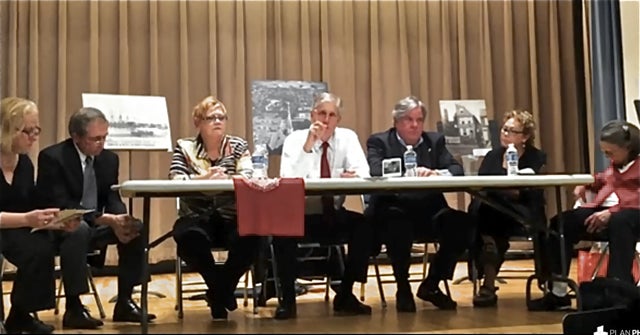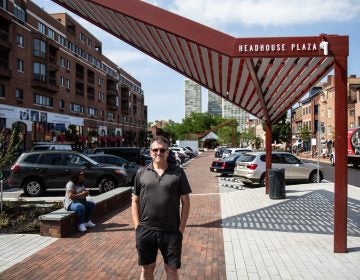When the downtown showdown was primetime

In an evening that was part nostalgic, part self-congratulatory, five of Queen Village’s most pivotal community activists of yore sat down to talk about how they once battled federal and state highway officials intent on running I-95 through the neighborhood.
The event was presented by the Historic Preservation Committee of the Queen Village Neighbors Association (QVNA) on Tuesday night at Settlement Music School. The panel offered a wide-ranging — if, at times, rambling — overview of a turbulent era for all downtowns, one that often involved highway construction, neighborhood clearance, and the beginnings of a preservation movement.
“The priority for renewal in the 1950s and 1960s was linking the downtown to the region by highways,” said the Center City District’s Paul Levy, a former QVNA president. “Highways became a tool for clearing urban blight.” Levy went on to describe Queen Village as it was at that time, an area whose residents still depended on the nearby waterfront for jobs but who were watching housing deteriorate and marine industries gradually disappear.
Likening it to a once vibrant balloon, he said, “the neighborhood was still there, but the air was being let out.” He pointed out that much of the area was “redlined” through the 1960s, and was perceived as a slum.
Marge Schernecke, active in QVNA since the early ’70s, provided a brief background on the creation of I-95 — which dated back to 1959 — and spoke of her family’s long history in the neighborhood. She recalled the pain of watching as residents were displaced and homes were slated for demolition, though not before “poachers” had raided them, stripping them of decorative iron work and marble stoops.
Although the highway did indeed get built, neighbors eventually won a few other rounds. Their protests held up the actual opening of the highway for years, and their long-fought attempts to have sound barriers installed and to quash new exit ramps from encroaching further into the neighborhood, were eventually awarded. They also triumphed in stopping another highway — the Crosstown Expressway, slated to move river to river along South and Bainbridge streets — from ever going forward.
“One of the things that helped us,” posed Conrad Weiler, a former QVNA president and once chair of the city’s Zoning Board of Adjustment, “was that the idea of neighborhood activism was still new. The PennDOT people were like deer in the headlights.” Schernecke added that until then highway noise barriers had never been used in Pennsylvania, and that after they were installed on I-95, PennDOT “was going all over the country [to consult]. We made them experts!”
Looking around the table, David Auspitz, another long-time QVNA member, and also ex-ZBA head, noted that the experience had done well by its participants, too. He pointed out that between Weiler and himself, Queen Village “ran the ZBA for 16 years,” and that much of its language came out of the neighborhood’s own zoning proceedings.
Indicating another QVNA alum, Levy, Auspitz said: “It’s awesome, what he’s accomplished.” “I learned it all from these guys,” responded Levy.
Real estate broker extraordinaire, Kathy Conway, the fifth panelist, talked about her early experience working as a secretary for QVNA, where she served as liaison for the neighborhood’s senior population. She recalled her mother saying,”if you could only take your ‘god bless you’s’ to the bank, you’d be a millionaire.”
“And so she did!” chimed in Levy. As the evening wound down, audience members shared memories, asked questions, and brought up familiar beefs — redoing Penn’s Landing, capping the highway, dealing with the specter of casino development.
Auspitz encouraged them not to give up the good fight. “There’s still a lot of battles out there,” he said. “The civic groups are not in the forefront of concern for the political people, and so they’ve lost a lot of their power.
“It’s time for people to pick up the mantle. It’s time to reorganize,” he continued. “Queen Village has always been on the cutting edge when it comes to this kind of thing. It’s something I was very proud to be a part of.” Organizers from QVNA then presented each panelist with a button from the old days. It read: “Stop I-95 Ramps.”
Contact the reporter at jgreco@planphilly.com
WHYY is your source for fact-based, in-depth journalism and information. As a nonprofit organization, we rely on financial support from readers like you. Please give today.




